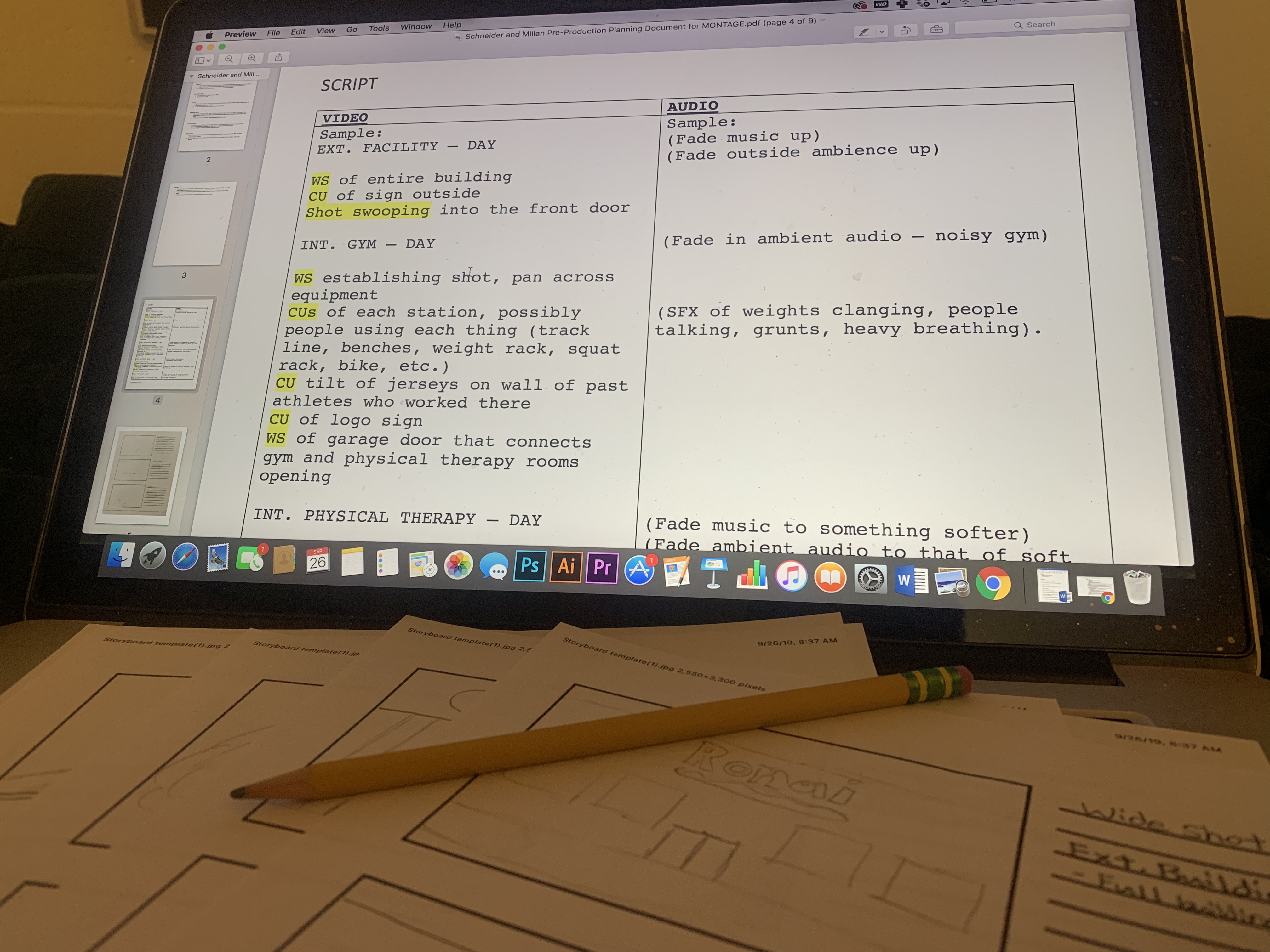
Reading and Writing
One of the first and most important points that Tom Schroeppel brings up in his book The Bare Bones Camera Course for Film and Video, is to always remember to check the focus of the camera. The shot and framing can be set up perfectly and the actors can have a perfect take, but if the shot is out of focus or focused on the incorrect point of emphasis then the whole meaning of the shot can change. While cameras have advanced over the past decade with auto focus, Tom recommends do a manual focus for each shot by zooming all the way in on say the nose of the actor and then zooming out to the specified shot. Zoom lenses are also great for creating a widely framed shot and then changing to a telephoto lense without the need of changing out the lenses.
As for the framing of the shot itself the rule of thirds have proven most effective for filmmaking. Rather than placing an object or person in the exact center of the frame, unless for artistic reasons, things should be placed along the horizontal or vertical lines to help create composition within the shot. The only big thing the cinematographer has to be aware of within the shot is head room and lead room. High angles and low angles can help to establish either feelings of dominance or weakness and camera movements such as zooms, pans, and tilts can help to add to the feeling of the scene and reveal important information within the frame. The key though is to begin each movement still and then proceed to moving for editing continuity. And when creating a montage, Tom recommends having two different shots next to each other. The New York Film Academy listed out 12 of the Most Popular Camera Shots highlighting some of the most used shots in movies such as the over the shoulder, two shot, and even Alfred Hitchcock’s dolly zoom.
Jimm Fox in his article titled Video Pre-Production Planning Check-List gives his input on what filmmakers need to remember and take into account during the pre-production stage. The first step is to clearly define your business objective. This can range from a number of things such as raising awareness, influencing a group, or showcasing. Each will require different planning techniques compositionally but that doesn’t mean pre-production should differ in terms of the correct steps being taken such as concept development, writing a treatment, and laying out storyboards. Mark R. Robertson defines storyboarding in his article Storyboarding Tips as a visual representation, using drawings and illustrations to map out the flow of your video. These steps can help to flesh out ideas and see where improvements and changes can be made which are easier to do during pre-production and not when the camera is ready to roll.
Research to Inform
3-5 Videos that show examples of guidelines for proper visual composition
Batman Returns (1992)
https://youtu.be/9K5EkrvMLKA?t=15
Fans are already familiar with the persona of Bruce Wayne being the caped crusader Batman, but that doesn’t stop Tim Burton from using this moment in the film to help re-establish the dominance and heroism of Batman. What starts as a high angle close-up is quickly turned into a low angle as the camera follows Michael Keaton standing up by tilting up with him to help reveal the bat signal behind him.
The Avengers (2012)
https://youtu.be/6lOxW0AB958?t=14
Over the shoulder shots are useful when characters are exchanging dialogue directed at one another but can be an even more powerful composition when the scene reaches an argument. What starts as a two shot showing the characters together on “the same page” is quickly turned into a debate when going over the shoulders of Steve Rogers and Tony Stark. This helps to keep the conversation in focus between the two characters and show the tension and emotion of the facial reactions by each character and witty response to one another in the argument.
Psycho (1960)
https://youtu.be/I9mJ2oBONug?t=19
The rule of thirds helps to director and cinematographer to place the subject perfectly in coherence with the background to help set the scene but also reveal things to viewers about the character. Rather than placing Norman at the exact center of the frame, Hitchcock places him to the right line to allow for the lead room to reveal the taxidermy animals and shadow cast behind him. The shot also allows for conversation with Marion who is positioned on the left line in her shot.
Create
Pre-Production Packet
Schneider and Millan Pre-Production Planning Document for MONTAGE
Above is a link to my pre-production planning document that I have created in preparation for a video montage shoot that I am doing of a locally owned business in my hometown that specializes in physical therapy and strength and conditioning training.
Works Cited
“Chapter 1, 2, 5, 6.” The Bare Bones Camera Course for Film and Video, by Tom Schroeppel, Langara College, 2018.
Fox, Jimm. “Video Pre-Production Planning Check-List – 11 Steps to A Successful Project – Marketing with Video and Rich Media Blog – One Market Media.” OMM, 11 Aug. 2019, onemarketmedia.com/2013/04/16/video-pre-production-planning-check-list-11-steps-to-a-successful-project/.
New York Film Academy. “Acting Tips: 12 Camera Shots Every Actor Should Know.” Student Resources, 27 Aug. 2018, www.nyfa.edu/student-resources/12-most-popular-camera-shots-actors-should-know/.



